The History of Trinity College
Trinity College is the sole constituent college of the University of Dublin. The university was modelled after other collegiate universities in England; however, only one college was ever established. Because of this “Trinity College” and “University of Dublin” have become synonymous. Founded in 1592 in the remaining buildings of the former Priory of All Hallows which had been dissolved by the Crown in 1538 during the Irish Reformation. Trinity College was founded by Queen Elizabeth I to strengthen the rule of the Tudors in Ireland. Prior to the religious reformation of the Protestant Tudors, Ireland had been largely Catholic. Many Catholics still held onto their faith and for much of Trinity College’s history it was the university for the Protestant elite. For many many years Catholics did not attend the university by choice of first the Protestant Church, then later, the Catholic Church.
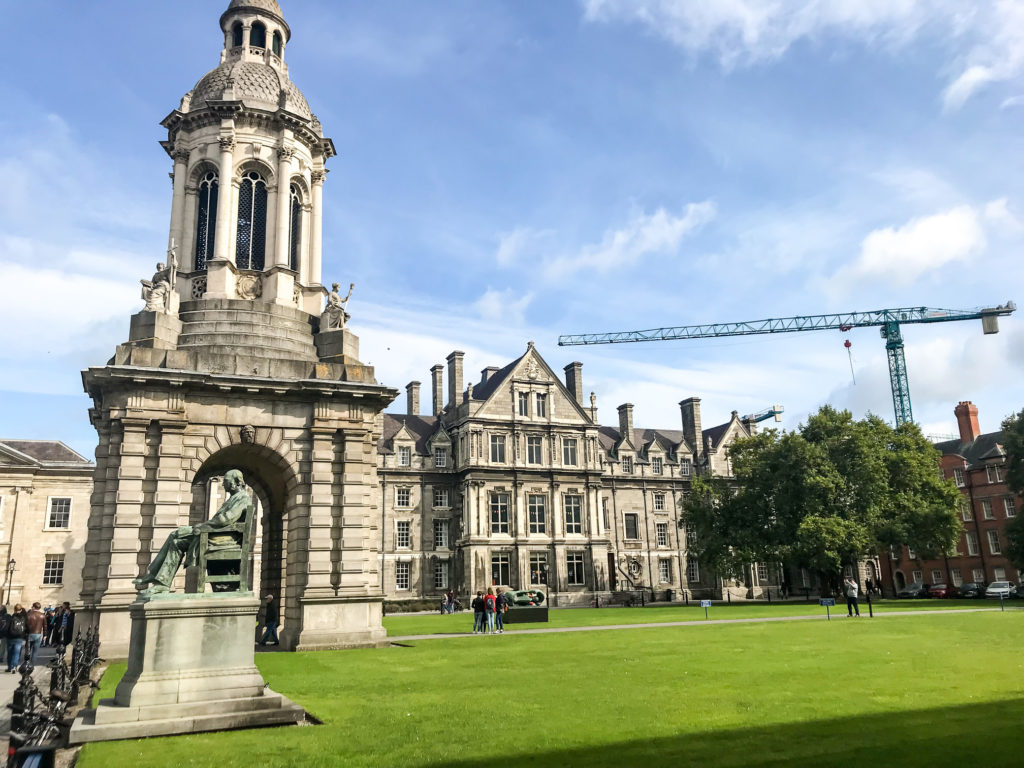
Trinity College Today
Nowadays, Trinity College is one of seven ancient universities of Britain and Ireland, making it Ireland’s oldest university. It is considered one of the most elite academic institutions in Europe and excels in academic research. They are even a member of the League of European Research Universities, which is a list of the top 23 academic research universities in Europe. Trinity College is also home to the largest research library in Ireland.

The Library
Due to its historic standing, Trinity College Library is a legal deposit library for the UK and Ireland. This means that one copy of each book and periodical published in the Republic of Ireland and Britain have to be given to the library. The library buildings on campus have amassed approximately five million books. The most famous of these buildings is the original Old Library.
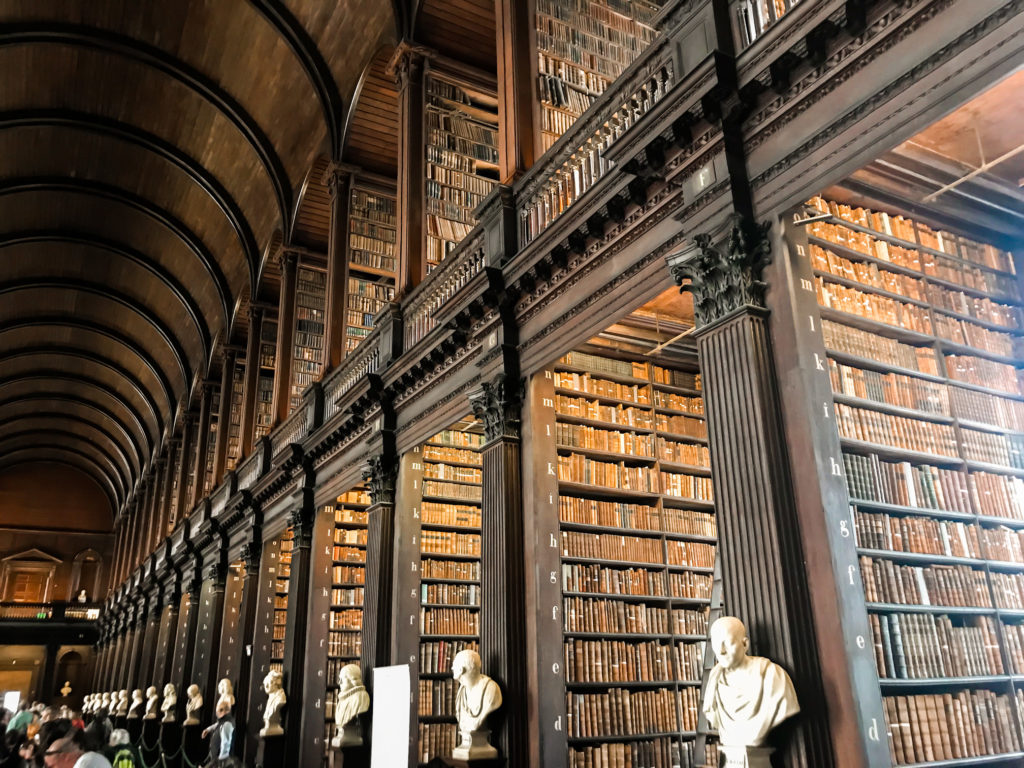
The Old Library
The Old Library of Trinity College sees over half a million visitors each year making it one of Ireland’s biggest tourist attractions. The Old Library was built in the 18th century and stepping into the iconic Long Room is like stepping back in time. It’s hard to know what to look at first when you step into the room. In 1860 the roof on the Long Room was raised to add in an upper gallery and vaulted ceilings to accommodate the library’s growing collection. Today the dark oak shelves hold 200000 of the libraries oldest and rarest books. Marble busts of writers, philosophers and men connected to Trinity College line the length of the room. The Old Library is home to many other great treasures. On display in the Long Room are the Brian Boru harp, one of three surviving medieval Gaelic harps which is the model for the current emblem of Ireland. Also, a rare copy of the 1916 Proclamation of the Irish Republic. This was a document issued by the Irish Volunteers and the Irish Citizens Army proclaiming Ireland’s independence from the UK and this was the start of the 1916 Easter Rising. Perhaps the most famous though, is the Book of Kells.
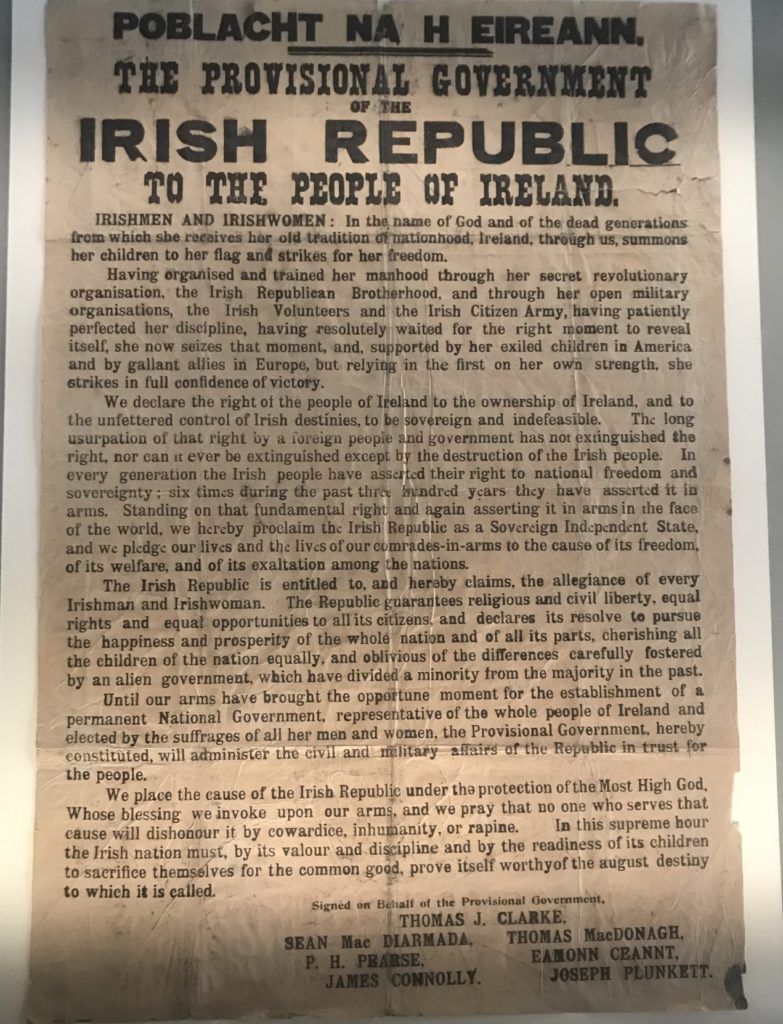
The Book of Kells
The Book of Kells is a Gospel book written in Latin containing the four Gospels of the New Testament. The origins of the book is debated, it is believed to have been made sometime around 800AD. It was created in a Columban monastery in either Britain or Ireland, as to the exact location there are at least five competing theories. The most widely accepted theory is that the book was started at Iona Abbey (Isle of Iona, Scotland) and finished at the Abbey of Kells (Kells, Co. Meath, Ireland.) The Abbey of Kells was its home for many centuries and this is where it gets its name.
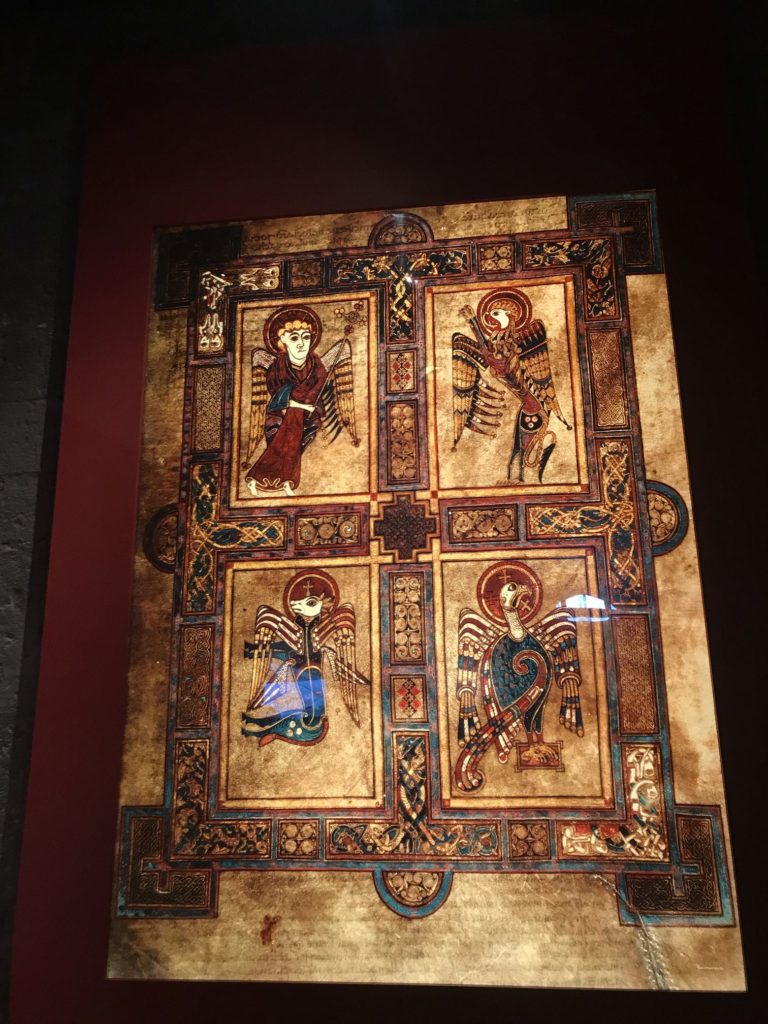
The Book of Kells is regarded as Ireland’s finest national treasure. It is a masterpiece of western calligraphy and represents the peak of Insular illumination. The Book of Kells surpasses all other Insular Gospel books in both intricacy and its extravagance. Let’s talk Insular art real quick, Insular art is a post-Roman style of art found in Ireland and Britain. It combines Celtic and Anglo-Saxon styles, think geometric shapes, highly intricate and elaborate interlaced decoration and design. In the case of the Book of Kells itself, it brings together traditional Christian symbols and complex swirling designs. The 680 pages are heavily decorated with human and animal figures, as well as mythical creatures combined with Celtic knots and interlacing patterns.
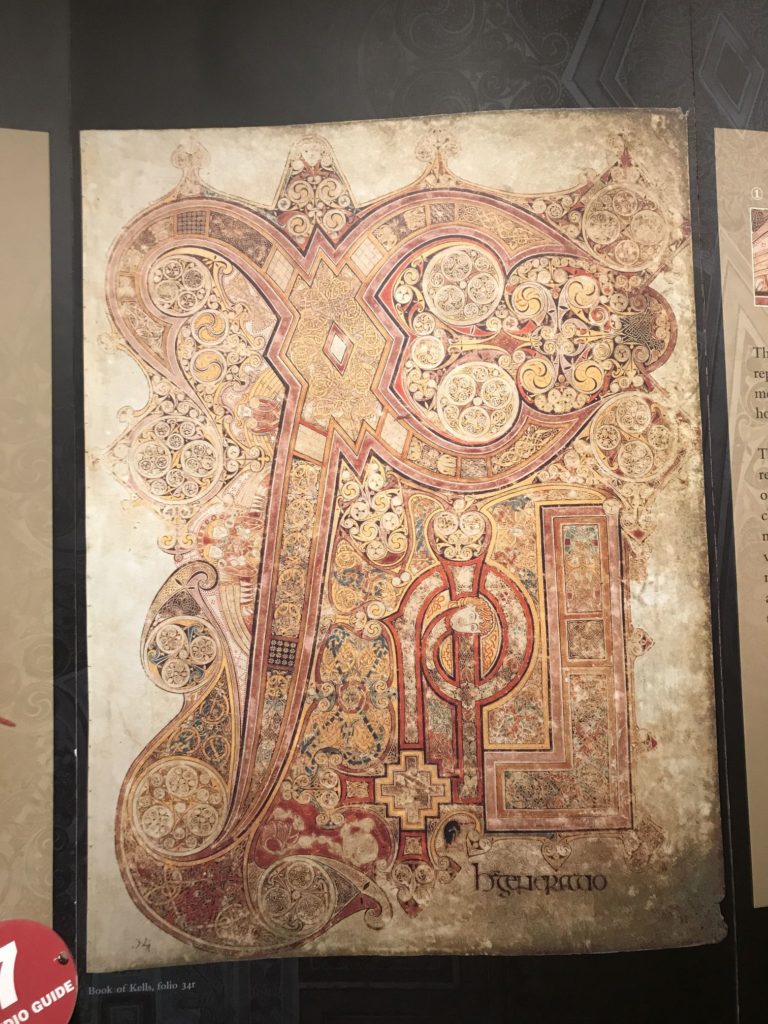
Abbies were a frequent target of raids and the Abbey of Kells was no exception. The Abbey was pillaged and plundered by Vikings many times during the 9th century. An entry from 1007 can be found in the Annals of Ulster talking about a great Gospel book that was stolen. It was recovered a few months later but had its golden and bejewelled cover ripped off. It’s assumed that this Gospel Book was the Book of Kells. Given all this it is amazing that the book survived this long and is still in fairly good condition. A lot of this is of course due to it being sent to Trinity College. The book left Kells Abbey in 1654 to be sent to Dublin for safekeeping due to Cromwellian raids on religious institutes at that time. In 1661 it was presented to Trinity College where it has pretty much stayed since.
Visiting the Book Of Kells and Old Library
The University has done a lot of work in preserving the book and ensuring that it can stay on display to the public year round. Today the book is bound into four volumes, one volume for each Gospel. You can visit the Book of Kells as well as the Long Room at the Old Library seven days a week. Each day two of the four volumes are out on display under glass. One is open to a page showing the intricate decorations and another one showing the text.
Tickets range from 11-14€ for adults and can be purchased online or at the exhibit. The benefit to booking online is that you can select a time slot and can skip the ticket queue. The line for tickets can get quite long. We lucked out the first time we visited, when we arrived it was at least a 30 minute wait for tickets. As we were contemplating coming back another time it started raining and all of a sudden there was no line. Visiting the Book of Kells exhibit really is the best way to learn about the book. You’ll learn about things like what pigments were used to create the coloured inks to how they’ve analyzed the text to learn about the monks that were involved in the creation of the book. It’s full of all sorts of amazing facts and in-depth analysis of the symbols in the book.
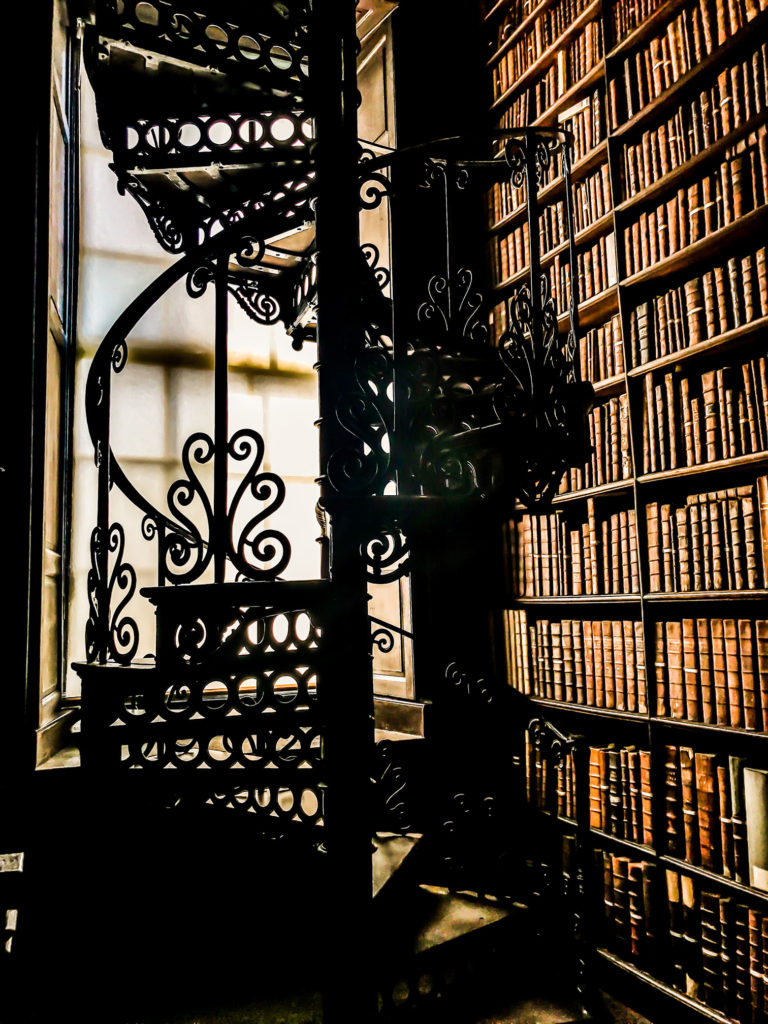
Of course, currently the exhibit is closed due to COVID-19 but the team at Trinity College has scanned through every page of the Book of Kells and it is available to view online (just search Book of Kells.) That should help tide you over until you get the chance to visit in person.
If you’re planning a trip to Dublin in the future you might want to check out my other post about the Guinness Storehouse. Or, you can read about what it was like to be in Dublin for Saint Patrick’s Day during the Coronavirus pandemic.
That’s all for this week I’ve been working on new video content which I will be posting on YouTube. To stay up to date with my travels and new videos you can follow along on Facebook, Twitter and Instagram. You can also now find me on Pinterest where I am putting together holiday specific boards but will also be sharing all sorts of other content.
See you all next week!
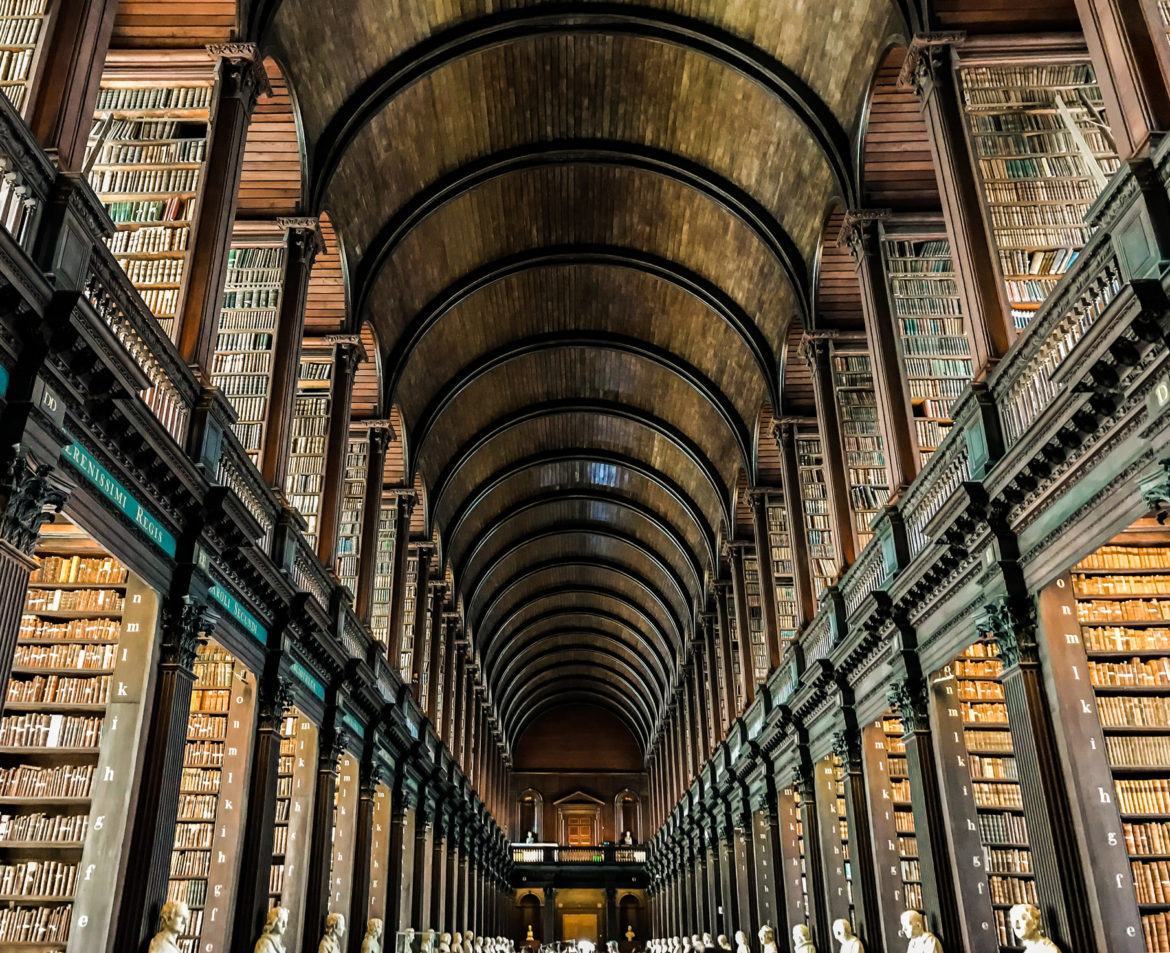
Very interesting and informative. Looks like a beautiful place.
Thank you! Glad you enjoyed!